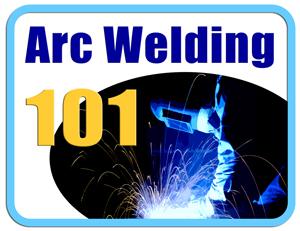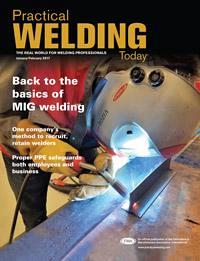- FMA
- The Fabricator
- FABTECH
- Canadian Metalworking
Categories
- Additive Manufacturing
- Aluminum Welding
- Arc Welding
- Assembly and Joining
- Automation and Robotics
- Bending and Forming
- Consumables
- Cutting and Weld Prep
- Electric Vehicles
- En Español
- Finishing
- Hydroforming
- Laser Cutting
- Laser Welding
- Machining
- Manufacturing Software
- Materials Handling
- Metals/Materials
- Oxyfuel Cutting
- Plasma Cutting
- Power Tools
- Punching and Other Holemaking
- Roll Forming
- Safety
- Sawing
- Shearing
- Shop Management
- Testing and Measuring
- Tube and Pipe Fabrication
- Tube and Pipe Production
- Waterjet Cutting
Industry Directory
Webcasts
Podcasts
FAB 40
Advertise
Subscribe
Account Login
Search
WPS and PQR defined
- By Paul Cameron
- Updated February 29, 2024
- January 30, 2017
- Article
- Arc Welding
Q: I'm reading up on the proper procedure and practices for developing a weld procedure specification (WPS) and procedure qualification report (PQR). Do you know of any resources that are a sort of WPS and PQR for dummies?
From my limited perspective I'll be writing down the proposed values on the PQR, sending it out for testing, and if it comes back with a passing marks I'll use that information to create a WPS. However, on the PQR forms we have here there is a line for "Governing WPS." I remember you mentioning in your seminars something about "Which comes first, WPS or PQR?” However, I'm unable to do more than remember that idea. Any help on the how-to is much appreciated!
Also, do you have some sort of donation or fund in your name? I feel guilty asking for your assistance without some way to pay you back. If you've any ideas, let me know!
What Are WPS and PQR?
A: First, let's define these terms.
A WPS is a formal, written document containing specific instructions for how to complete a weld properly, consistently, and to code requirements. A PQR is a record of the procedures and materials used to create and test a weld. It provides evidence that the WPS can produce an acceptable weld.
Steps for Developing WPS and PQR
Now, back to your question. The line “I'll be writing down the proposed values on the PQR, sending it out for testing, and if it comes back with a passing mark, I'll use that information to create a WPS” kind of creeps me out because it sounds a little “just-throw-it-over-the-wall”-ish to me. When it comes to weld inspection work, you’re going to need to witness each step of this process.
Start by writing a preliminary WPS—this could be considered a “Governing WPS.” This isn’t a real, qualified WPS, but rather simply a list of what you’d like your final WPS to look like. Write each of the essential and nonessential variables as you would like to see them, and then work backward to figure out what PQRs you’ll need to qualify them. (Note: It could be several.)
Starting with a preliminary WPS helps you stay on track and prevents you from making the common mistake of finishing all your testing and concluding with an “Oh crap, insert problem here” moment—problems like “I should have used a Group II steel,” or “I should have dropped the plate temperature to 50 degrees before starting,” or “What was I thinking using a 4-in. pipe?” or “I should have used a square groove.” You get my drift.
Once you have a preliminary WPS, break down each variable and ask yourself what you need to do to achieve it. Chances are your finished WPS will have greater ranges than your preliminary because you’ll be working with real data.
Let me break it down.
- Write down the proposed values.
- Take them to the welder/technician for feedback (and adjust based on their input).
- Observe every part of the testing; check joint conditions; measure plate temperature (before each pass); measure travel speed (during each pass); document wire feed speed, amps and volts (for each pass).
- Determine visual acceptance.
- Send the weldment out for NDE and destructive testing.
- Review the test results for compliance.
- Use your collected data and your code book to develop a WPS.
You have to be the one ensuring that every step is followed; you’ll need to wear the welding helmet to ensure technique is correct; and you’ll need to ensure the final weldment meets the acceptance criteria before NDE/destructive testing.
As for a WPS and PQR for dummies ... I like that. You may find AWS B2.1, Base Metal Grouping for Welding Procedure and Performance Qualification helpful.
Finally, and most important, yes, I have a GoQuenchMe.com campaign that runs continually. You show up in my part of the country or I show up in yours and you have to buy the first round. I believe in keeping it simple.
About the Author

Paul Cameron
Braun Intertec
4210 Highway 14 East
Rochester, MN 55904
About the Publication
subscribe now

The Welder, formerly known as Practical Welding Today, is a showcase of the real people who make the products we use and work with every day. This magazine has served the welding community in North America well for more than 20 years.
start your free subscription- Stay connected from anywhere

Easily access valuable industry resources now with full access to the digital edition of The Fabricator.

Easily access valuable industry resources now with full access to the digital edition of The Welder.

Easily access valuable industry resources now with full access to the digital edition of The Tube and Pipe Journal.
- Podcasting
- Podcast:
- The Fabricator Podcast
- Published:
- 04/16/2024
- Running Time:
- 63:29
In this episode of The Fabricator Podcast, Caleb Chamberlain, co-founder and CEO of OSH Cut, discusses his company’s...
- Trending Articles
Sheffield Forgemasters makes global leap in welding technology

Welding student from Utah to represent the U.S. at WorldSkills 2024

Lincoln Electric announces executive appointments

Lincoln Electric acquires RedViking

Engine-driven welding machines include integrated air compressors

- Industry Events
16th Annual Safety Conference
- April 30 - May 1, 2024
- Elgin,
Pipe and Tube Conference
- May 21 - 22, 2024
- Omaha, NE
World-Class Roll Forming Workshop
- June 5 - 6, 2024
- Louisville, KY
Advanced Laser Application Workshop
- June 25 - 27, 2024
- Novi, MI



























